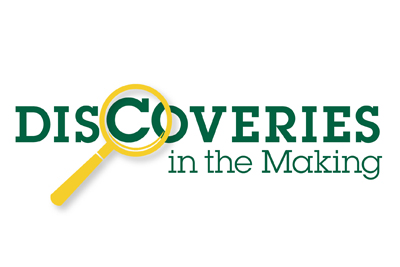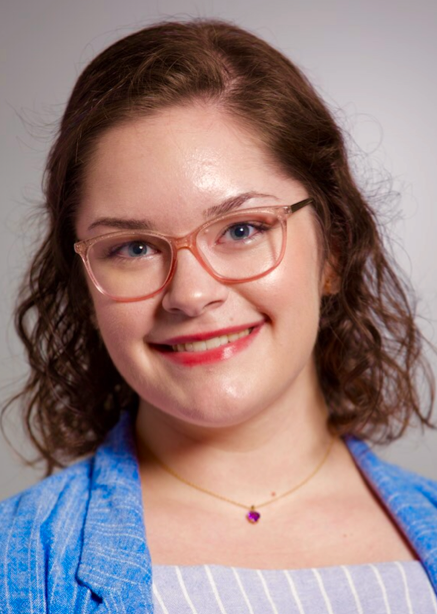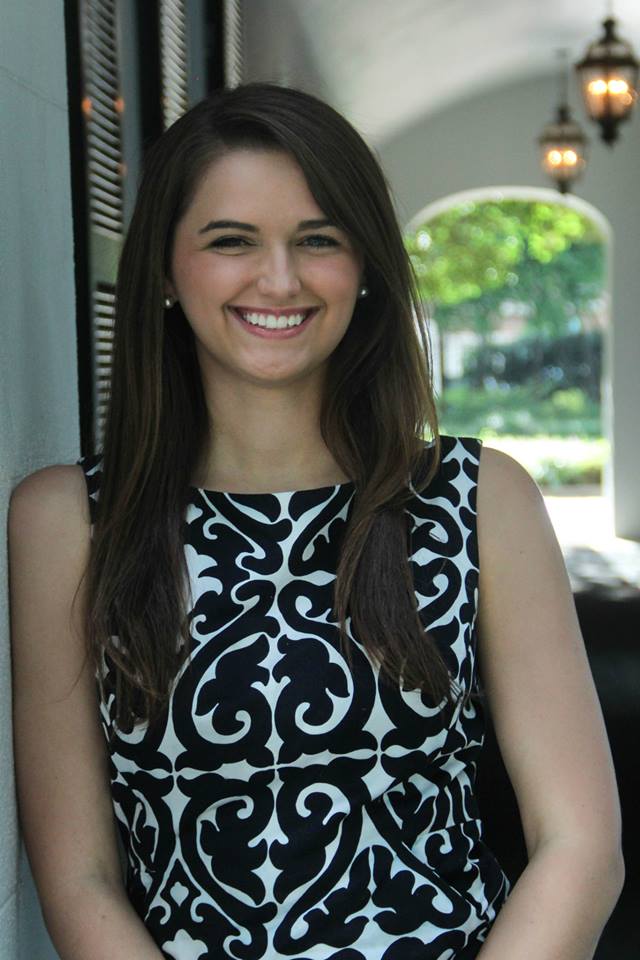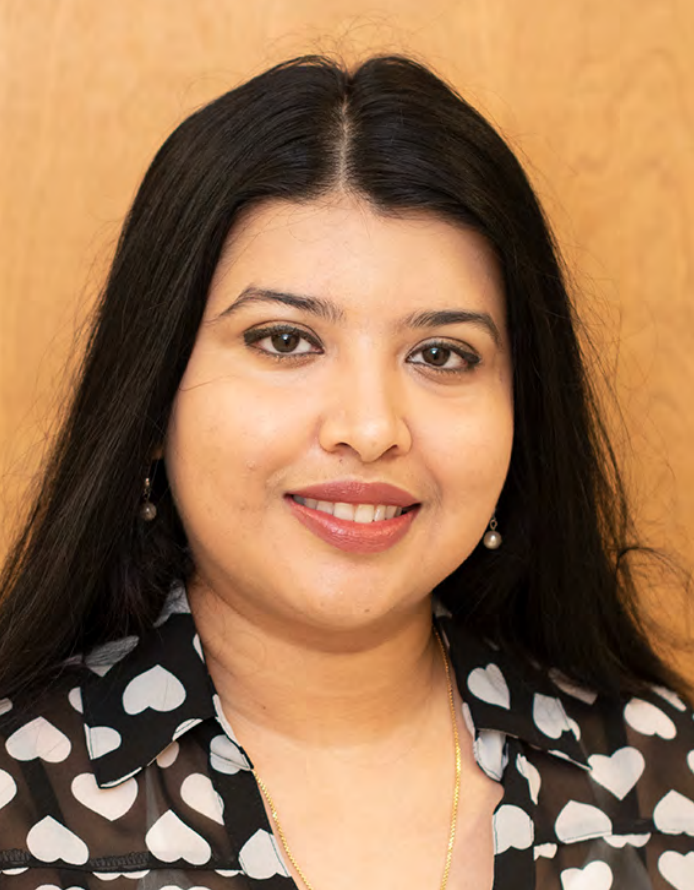 What if you could share cutting-edge research from tomorrow’s leading scientists with the people who pay for it, participate in it and who will one day benefit from its potential life-saving results?
What if you could share cutting-edge research from tomorrow’s leading scientists with the people who pay for it, participate in it and who will one day benefit from its potential life-saving results?
That is what Discoveries in the Making is all about – putting UAB graduate students and postdoctoral researchers in front of the community to share the exciting things they have found through their research.
Hosted by the University of Alabama at Birmingham Graduate School, Discoveries in the Making seeks to make these amazing new discoveries more available and digestable for the public through a monthly happy hour at The Lumbar. Discoveries speakers present on a variety of topics, including eating disorders, asthma, diabetes, sea turtles, anxiety and PTSD, breast cancer, epilepsy, and more.
Through the efforts of our talented trainees, the Discoveries series enables UAB to share with the Birmingham community our newest knowledge and discoveries in the making.
-
If you are a UAB graduate student or postdoc, you can help make Discoveries a success by volunteering in one or more of the following ways:
- Apply to become a "Discoveries in the Making Scholar" and present at the Discoveries Happy Hour at The Lumbar.
- Polish your science communication skills by volunteering to write about a Discoveries presentation for a non-specialized audience. These stories will post on the Discoveries in the Making blog, as well as on social media channels.
Please direct questions to Kim Eaton at kimeaton@uab.edu.
-
- Fill out the Discoveries Scholar Form. Make sure you talk to your mentor about participating in Discoveries in the Making before submitting your form.
- Please use the Discoveries in the Making Powerpoint Template. You'll see two already completed introductory slides before the blank title and content slides. Leave Slides 1 and 2 in place at the beginning of the presentation for the purpose of your introduction by Dean McMahon.
- After you've created your presentation (and practiced at home!), contact Kim Eaton at kimeaton@uab.edu to schedule a one-on-one prep session.
- After you've completed your prep session, we will schedule your presentation.
-
Practice your Discoveries in the Making presentation before you make it by signing up for one of our practice sessions below.
All of the practice sessions will take place in the Graduate School’s large conference room on the ground floor of Lister Hill Library (directly across from the restrooms).
Schedule
-
July 6, 2021

“A kidney disease caused by mistaken identity: IgA nephropathy”
Presented by Mary BuntentIgA Nephropathy (IgAN) is a kidney disease in which an abnormal Immunoglobulin A protein is not recognized by the body. This causes a reaction from the body that forms a deposit that travels into the filter of the kidney and causes damage. We are investigating the components of this deposit in IgAN patients and how they contribute to the damage of the kidney’s filter.

“Tissue Chips and Microphysiological Systems”
Presented by Leslie DonoghueTissue chips and microphysiological systems are emerging translational tools to study the body. Nano-to micro in scale, these technologies are small but provide new methods to screen drugs during preclinical testing, model disease, and are at the forefront of personalized medicine. They consist of human cells housed within dynamic environments to mimic complex tissue and organ architectures. In practice, they provide an alternative to traditional animal studies to study human health and disease.

“Meal timing is important: When is it best to eat a high fat meal?”
Presented by Carol GriggsParamita's research focuses on the role of time restricted feeding on cardiovascular health during a high fat diet.
*All Discoveries Happy Hour sessions start at 6 p.m. at The Lumbar.
Discoveries in the Making Scholars
We can't wait to hear about your research! Follow the instructions below to get ready for your Discoveries in the Making talk.
-
Preparation
Audience: Unlike when you present to other scholars at a research conference, for Discoveries, you will be talking to members of the general public who are not experts in your academic field. So, be sure that you:
- Engage them with a “hook” (anecdote, statistic, quote, etc.) that gets their attention in the beginning. Don’t open with a joke, as humor is iffy, and avoid salty language. Personal stories are generally a great way to draw in your audience.
- Define and/or explain any technical terms. It is also wise to limit technical terms to a few main concepts essential to their understanding of your science. Don’t use jargon.
- Respect their sensitivities and omit details of experimental processes that they might find objectionable. Explain methods concisely and conceptually, unless they are innovative and interesting. Don’t go into details people can’t understand or appreciate.
Purpose: Unlike when you present findings at a research conference, you are not trying to position your research for publication or funding. For Discoveries, you want to tell the story of your research in a way that communicates its value (and UAB’s) to the public. Focus on one to three important “take-home messages” and package them in a way that is “instructive, interesting and maybe even fun,” as actor and scientific communicator Alan Alda would advise.
Structure & Length: Time your talk to be 10 to 12 minutes. That leaves time for questions from the audience (who may ask questions at any time in the talk). To organize your thoughts, you might try a simple 4-part structure. First, focus on a Situation (current negative or unexplained effects on people, populations, places, systems, etc.). Then explain the underlying Problem that may cause, be linked to, or predict the current Situation. Third, suggest a potential Solution that you have identified in your research question/hypothesis and method. End on an Evaluation of your research that shows implications, i.e. how your findings can improve the situation and lives. You may find it helpful to sketch out or storyboard your talk before you start actually creating slides. The Open Storyboard Worksheet with Prompts illustrates the Situation-Problem-Solution structure that works well for public talks like Discoveries.
Style: Use more pictures, video, and concept images than science charts and graphs, which are not always accessible to the general public. Do not use photos or video of animals in distress, which could offend or disturb your audience. Rule of thumb: Use one main image/idea per slide. Depending on the venue, slides may sometimes be displayed on a TV screen rather than projection screen, which means your slides should be readable even when scaled down on as small as a 32-inch screen. Make text a consistent and readable font and size throughout the slide show (minimum of 24 point for readability). Don’t use bells, whistles, sound effects, irrelevant clip art, etc. Include acknowledgements and sources where applicable.
Examples: Watch a few TED Talks to see how leading scientists communicate with the general public. Think about structure, content and delivery as you watch this Ted Talk given by UAB's own Dr. Sarah Parcak. Find more great science talks:
-
Presentation
Please use the Discoveries in the Making Powerpoint Template for your presentation. Leave Slides 1 and 2 in the template in place at the beginning of the presentation for the purpose of your introduction by Dean McMahon.
Think like your audience, and remember to focus on visuals instead of text as much as possible. If you get stuck or have questions along the way, feel free to contact Kim Eaton at kimeaton@uab.edu.
Practice both with your slides and without. You never know what technical problems could arise, and you should be able to give your presentation regardless. Practice your talk in front of the mirror, in front of friendly fans, and on video. Get feedback. Revise and practice some more.
-
Prep Session
When you have your presentation ready (and have already submitted your Scholar Form), email Kim Eaton at kimeaton@uab.edu to schedule your one-on-one prep session. One or more members of the Discoveries team will give you feedback on your presentation and offer revision tips as needed.
-
Delivery
- Arrive at least 15 minutes early, test the equipment, run through your presentation.
- Bring your slides on a thumb drive (the Graduate School or venue will provide a computer for you on which to open your presentation as well as a wireless slide advancer). Email a copy of your presentation to yourself in case of technical difficulties, etc.
- Conduct an audience check by looking for familiar faces, presence of children, etc.
- Pace yourself. Speak up and speak clearly. No rushing, but stick to your time limit.
- Avoid jargon and slang.
- Make eye contact and smile. Keep your tone conversational.
- Relax and have fun!
Here are some tips for answering questions during and after your talk:
- Anticipate questions and prepare possible answers.
- Pause before taking questions at the end of your talk. (Remember that audience members may ask questions during your talk, too.)
- Direct your responses to the entire audience.
- If no one asks a question, prompt them with, “Has anyone had experience with…?”
- Keep answers brief—no unnecessary details. Offer to continue dialogue after the talk.
- If someone disagrees, don’t appear to be defensive.
- If you don’t understand the question, ask for clarification.
- It’s OK to say I don’t know the answer to that question.
Discoveries in the Making Writers
If you are interested in becoming a Discoveries in the Making writer, email a few writing samples to Kim Eaton at kimeaton@uab.edu. All students will need to complete a one-on-one writing session before they are assigned to cover a Discoveries session.
-
Assignment
Your goal as a Discoveries in the Making writer is to describe each speaker’s research for a lay audience in a way that is interesting and engaging to the reader. Check out these resources and models to get started:
-
Photos
Take at least one quality photo of your assigned speaker. (Cell phone photos are fine.) The photo(s) can be taken before, during, or after the event. You may choose to take a posed photo of the speaker and/or snapshots while the speaker is presenting their research or talking to the public before or afterward. Make the file name(s) include the name of the speaker.
-
Video
You may also shoot video (again, cell phone video is fine; just make sure you turn your phone on its side to shoot in landscape mode), but video is not required. Videos should be no longer than 4 minutes.
-
Post Length & Format
Your post should be 700 to 800 words, submitted as a Word document or Google Doc with no special formatting. (Your post will be copied and pasted as plain text, which means it will lose any special formatting.) Do not use tabs at the beginning of new paragraphs; instead, put a return between each paragraph. If your post contains links, do not embed hyperlinks within the text. Instead, put the full URL in parentheses beside the word(s) that should be hyperlinked.
-
Submission
You must email your post to the speaker about whom you wrote (copying Kim Eaton at kimeaton@uab.edu) within four days of the event. Email your final draft to Kim within 7 days of the event. When you are ready to submit, email the Word doc and the JPG photo(s) to Kim Eaton at kimeaton@uab.edu. Kim will publish your post and photos with your byline and photo credit(s) on the Discoveries blog, as well as on the Graduate School’s social media platforms.
Sample email:
Hi [Name],
I have attached my blog post about your Discoveries in the Making talk on [date]. Could you check the article for factual accuracy before we publish it? Because the story must be a certain length, please do not rewrite text or add to the current word count if you have corrections. Feel free to send any necessary corrections using Word’s track-changes feature. Please reply-all (making sure that Kim Eaton – kimeaton@uab.edu – is in the CC line) within three days to let me know if there are any factual corrections needed.
Stay Connected
To learn more about Discoveries in the Making and to stay in the loop, like us on Facebook, subscribe to our newsletter, or contact us with specific questions.